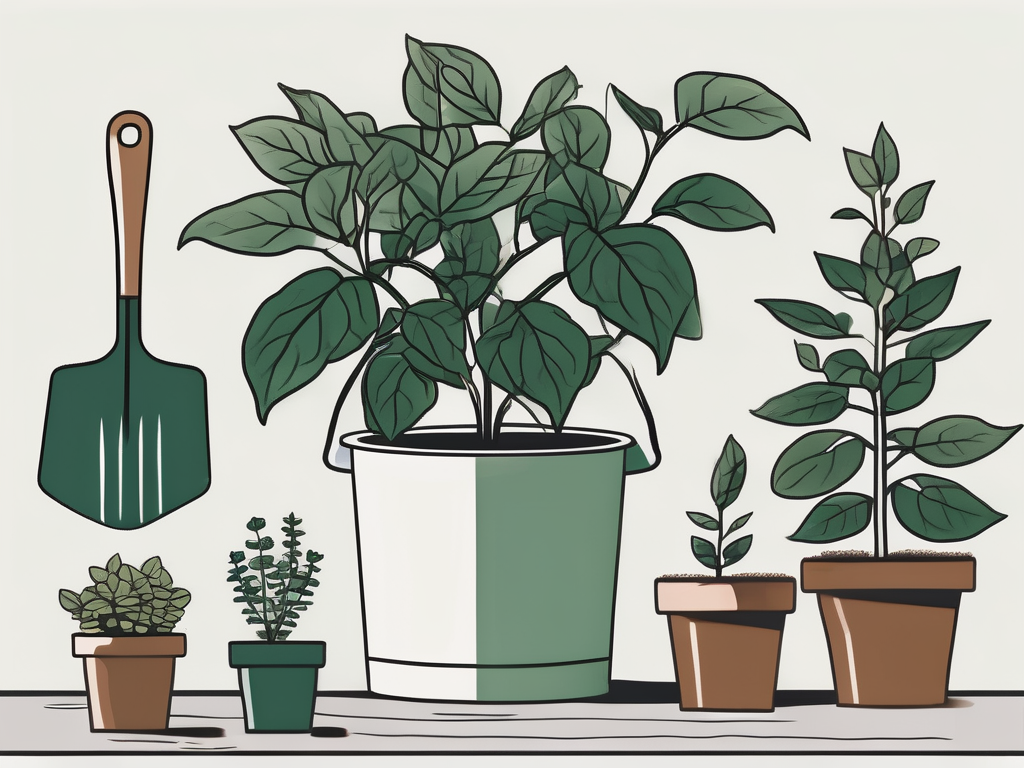
Spiderwort might not be the first plant that comes to mind when you're thinking about adding some greenery to your home, but it certainly deserves a spot on your list. Known for its charming foliage and ease of care, spiderwort is a versatile plant that can thrive in various settings, whether indoors or out.
In this article, we'll journey through the diverse world of spiderwort plants, exploring different types, their unique characteristics, and how to care for them. Whether you're a seasoned plant parent or just getting started, you'll find something useful to take away. Let's get started!
Finding the Right Spiderwort for Your Home
When it comes to choosing the right spiderwort for your space, it's helpful to know a little about the different types available. Each variety has its own distinctive appearance and personality, so there's bound to be one that suits your home and lifestyle.
Spiderworts, scientifically known as Tradescantia, are part of the Commelinaceae family. They come in a range of colors and patterns, which means they can fit nicely into any decor scheme. Here are some popular varieties you might consider:
- Tradescantia zebrina: This type is known for its striking purple and silver-striped leaves. It’s a trailing plant that looks beautiful in hanging baskets.
- Tradescantia fluminensis: Often referred to as the inch plant, this variety has glossy green leaves with a hint of purple underneath.
- Tradescantia pallida: Also known as the purple heart, this plant features deep purple leaves that add a bold splash of color to any space.
Choosing the right type depends on your personal taste and the light conditions in your home. Most spiderworts prefer bright, indirect light, but they can also tolerate lower light levels, making them versatile additions to your plant collection.
Potting and Soil: Setting Your Spiderwort Up for Success
Once you've chosen your spiderwort, it's time to think about potting and soil. Like most houseplants, spiderworts need a good home base to thrive. The pot you choose should have drainage holes to prevent water from accumulating at the bottom, which can lead to root rot.
When it comes to soil, spiderworts aren't too fussy. A general-purpose potting mix is usually sufficient, but you can make it even better by adding some perlite or sand for improved drainage. This helps mimic their natural habitat, where they grow in well-draining soils.
Here's a simple potting mix recipe you can try:
- 2 parts general-purpose potting soil
- 1 part perlite
- 1 part sand or vermiculite
Mix these ingredients together before planting your spiderwort. This mix provides the right balance of moisture retention and drainage, giving your plant a healthy environment to grow.
Watering Your Spiderwort: The Fine Balance
One of the most common questions about spiderwort care is about watering. How much is too much? How dry is too dry? Finding the right balance is key to keeping your plant happy.
Spiderworts generally prefer to have their soil kept slightly moist, but not soggy. A good rule of thumb is to water them once the top inch of soil feels dry to the touch. During the growing season, which is spring and summer, they may need more frequent watering. In the cooler months of fall and winter, you can cut back a bit as the plant enters a more dormant phase.
Here are some tips to ensure you're watering correctly:
- Use room temperature water to avoid shocking the roots.
- Water until you see it draining out of the bottom of the pot, then let the excess water escape completely.
- If the leaves start to droop, it might be a sign that your plant is thirsty.
- Yellow leaves can indicate overwatering, so adjust your schedule if you notice this.
Remember, it's better to underwater than overwater. Spiderworts can bounce back from a little neglect, but it's harder to recover from root rot.
Lighting Needs: Finding the Perfect Spot
Light is another crucial factor for your spiderwort's health. While these plants are quite adaptable, they do best in bright, indirect light. Too much direct sunlight can scorch their leaves, while too little light can cause them to become leggy.
If you're growing your spiderwort indoors, a spot near a north or east-facing window is often ideal. If you notice the leaves losing their vibrant color, it might be a sign that your plant needs more light. On the other hand, if the leaves start to look scorched or bleached, try moving it a bit further from the window.
For those who don't have a lot of natural light, spiderworts can also adapt to lower light conditions, though they may not grow as vigorously. Consider using a grow light if you want to give them a little extra boost.
Fertilizing for Vigorous Growth
To keep your spiderwort looking its best, fertilizing is an important step in your care routine. During the growing season, from spring to early fall, you can feed your plant every month with a balanced, water-soluble fertilizer.
When choosing a fertilizer, look for one with equal parts nitrogen, phosphorus, and potassium, often labeled as 10-10-10. This will provide all the essential nutrients your spiderwort needs to thrive.
Here’s how to fertilize:
- Dilute the fertilizer to half the recommended strength on the package.
- Apply it to the soil after watering to avoid burning the roots.
- Skip fertilizing during the winter months when the plant's growth slows down.
With proper fertilization, you'll notice more vibrant foliage and healthier, more robust growth. Just be cautious not to over-fertilize, as this can lead to salt buildup in the soil.
Dealing with Pests: Keeping Your Plant Healthy
Spiderworts are generally hardy plants, but they can occasionally fall prey to pests such as spider mites, aphids, and mealybugs. Regularly inspecting your plants can help catch any infestations early.
If you notice tiny webs, sticky residue, or white cottony masses on your plant, you might have a pest problem. Here's what you can do:
- Remove any visible pests by wiping the leaves with a damp cloth.
- Use a gentle insecticidal soap or neem oil spray to treat the plant, following the instructions on the product label.
- Ensure good air circulation around your plant to prevent pests from settling in.
- Consider isolating the affected plant to prevent pests from spreading to others.
With a little vigilance and care, you can keep your spiderwort pest-free and thriving.
Pruning and Propagation: Encouraging Fuller Growth
Spiderworts benefit from occasional pruning to encourage bushier growth and remove any dead or damaged leaves. Pruning is also a great way to keep your plant looking tidy and well-maintained.
Here’s how to prune your spiderwort:
- Use clean, sharp scissors or pruning shears to avoid damaging the plant.
- Trim back any leggy or overgrown stems, cutting just above a leaf node to encourage new growth.
- Remove any yellow or brown leaves to keep the plant looking fresh.
Spiderworts are also easy to propagate, making them a wonderful plant to share with friends or expand your collection. You can propagate them through stem cuttings by following these steps:
- Cut a healthy stem about 4-6 inches long, just below a node.
- Remove the lower leaves, leaving a few at the top.
- Place the cutting in a jar of water or plant it directly in soil.
- If using water, change it every few days to keep it fresh.
- Once roots develop, you can plant the cutting in soil.
Propagation is not only a fun project but also a cost-effective way to keep your home filled with beautiful plants.
Integrating Spiderwort into Your Home Decor
Spiderworts are not just about their easy care; they also make fabulous additions to your home decor. Their trailing vines and colorful leaves can add a touch of whimsy and charm to any room.
Here are some ideas for incorporating spiderwort into your interior design:
- Hanging Baskets: The trailing nature of many spiderwort varieties makes them perfect for hanging baskets. Place them in a bright corner to add vertical interest.
- Shelves and Bookcases: Let the vines cascade over the edges of shelves or bookcases for a lush, green accent.
- Mixed Planters: Combine spiderwort with other plants of varying heights and textures for a dynamic display.
Whether you're aiming for a minimalist look or a boho jungle vibe, spiderworts can fit seamlessly into your decor style.
Creating a Care Routine: Maintaining Your Spiderwort's Health
Taking care of spiderwort doesn't have to be a chore. Establishing a simple care routine can keep your plant healthy and thriving with minimal effort. Here’s a straightforward plan you can follow:
- Weekly: Check the soil moisture and water as needed. Inspect the leaves for any signs of pests or disease.
- Monthly: Fertilize during the growing season. Prune any overgrown or unhealthy parts of the plant.
- Seasonally: Adjust your watering schedule as the seasons change. Move the plant if necessary to ensure it continues to receive adequate light.
With these simple steps, you can enjoy the beauty and benefits of a well-cared-for spiderwort plant all year round.
Final Thoughts
Spiderworts are delightful plants that bring color, texture, and a touch of nature to any home. By understanding the different types and their care needs, you can enjoy a thriving spiderwort collection that enhances your living space.
At Cafe Planta, we're passionate about helping you succeed with your houseplants. Whether you're looking for new additions or need advice, we're here to support you. Feel free to reach out via email or on Instagram. Let's grow together!












